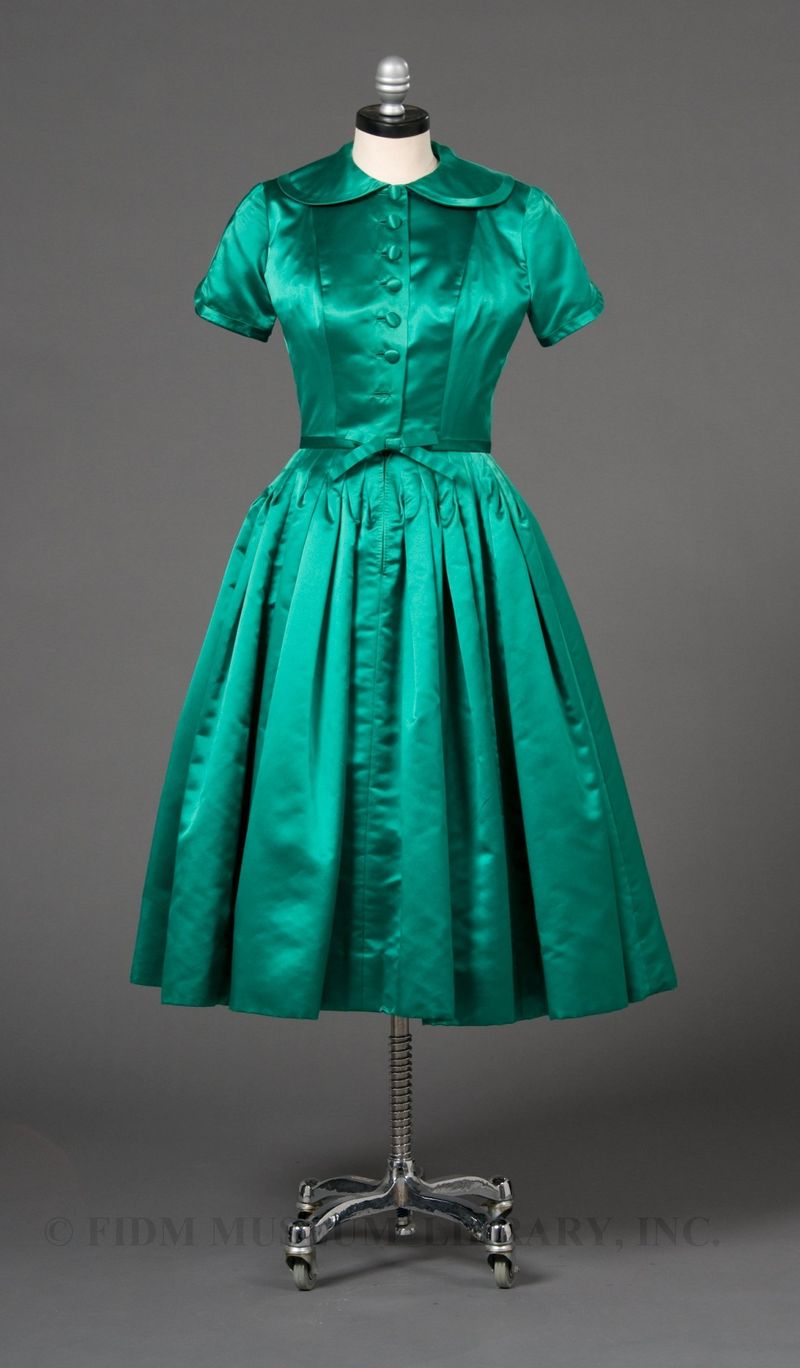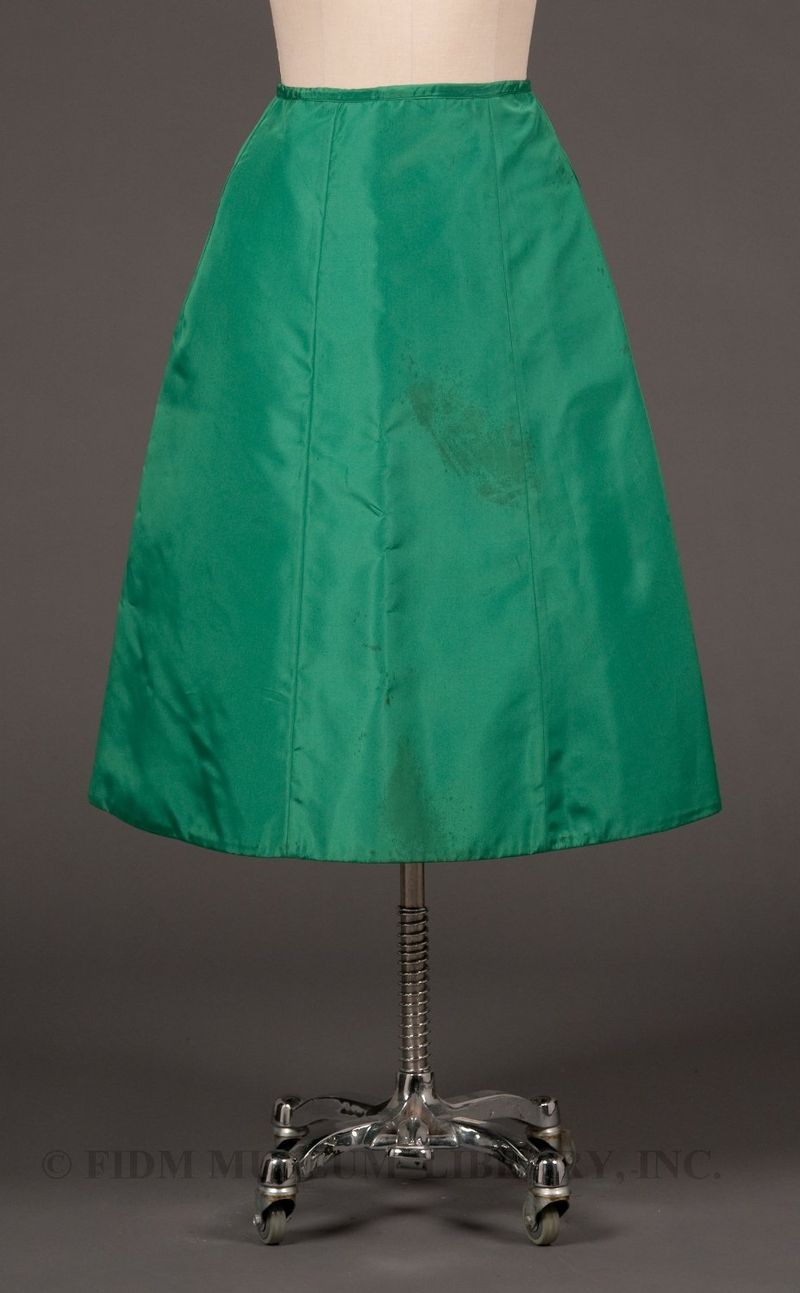During the 1950s, French haute couture was a dominant force in fashion. Elite American women traveled to Paris and purchased their wardrobes directly from renowned couturiers, while many others experienced haute couture through mass-produced versions of the latest French styles. This was a strength of the American fashion industry; producing stylish and affordable garments in large quantities, whether the latest haute couture copies or playful sportswear. Only a very few American designers worked in the style of the haute couture, producing meticulously crafted garments on a limited scale. Los Angeles’ own James Galanos (b. 1924) was one of these designers. In 1954, when Galanos first presented a collection in New York City, fashion critics noted that his “cut and detail smacked of Parisian couture.”1
James Galanos
c. 1955
Gift of Susan Lister
S2007.894.1A-C
Galanos had actually apprenticed with the couturier Robert Piguet in 1947-48, so the observation of the New York Times fashion critic was correct. Galanos was with Piguet only a short time, because he was “terribly ambitious and a little lonely.”2 He returned to the United States, working briefly in New York before moving to Los Angeles. With the encouragement of Jean Louis, costume designer at MGM, Galanos decided to start his own business, opening Galanos Originals in 1951.
From the beginning, Galanos concentrated on a vision of refined elegance, sophistication and quality, based on “the components of fabric, color and proportion.”3 Galanos’ carefully finished garments were widely considered an American alternative to French haute couture. Though his designs were technically ready-to-wear, each garment was created individually by hand, on a mannequin, not from a standard pattern. Galanos personally supervised his workrooms, which were staffed by workers trained in European ateliers or Hollywood costume shops.
Fabric was an important component of Galanos’ aesthetic and a starting point for his designs. Though he sketched often, Galanos believed that “the actual gown materialized once you start fitting” the fabric on the body.4 The luxurious fabrics used by Galanos were purchased on regular buying trips to Europe. His most elaborate evening gowns often featured beading or sequins, particularly those produced in the 1980s.
S2007.894.1A-C
This c. 1955 emerald green silk satin cocktail dress reflects both Galanos’ design interests and the mood of the 1950s. A high-neckline, Peter Pan collar and bow belt create an impression of
demure femininity, while the covered buttons and self-fabric bias
binding at collar and sleeve demonstrate an interest in elegant details. Full skirts were popular in the early 1950s, but Galanos used his own meticulous technique to control the fullness of the dress seen here. To create a full skirt and a controlled hip, Galanos sewed the pleats both at the outer edge and on the diagonal. The weight of the skirt is supported by a matching petticoat. Though the petticoat could just as easily have been plain and utilitarian, its luxurious finish hints at Galanos connection to the practices of haute couture. When combined with small details like the thoughtful finish of a collar, it becomes clear why Galanos’ work was so often considered equal to that produced by the couturiers of Paris.
1 Pope, Virginia. “Collection Shown by New Designer” New York Times 2 April 1954: 20.
2 Diamonstein, Barbara Lee. Fashion: The Inside Story New York: Rizzoli. 1985: 80.
3 Ibid, 81.
4 Ibid, 81.




